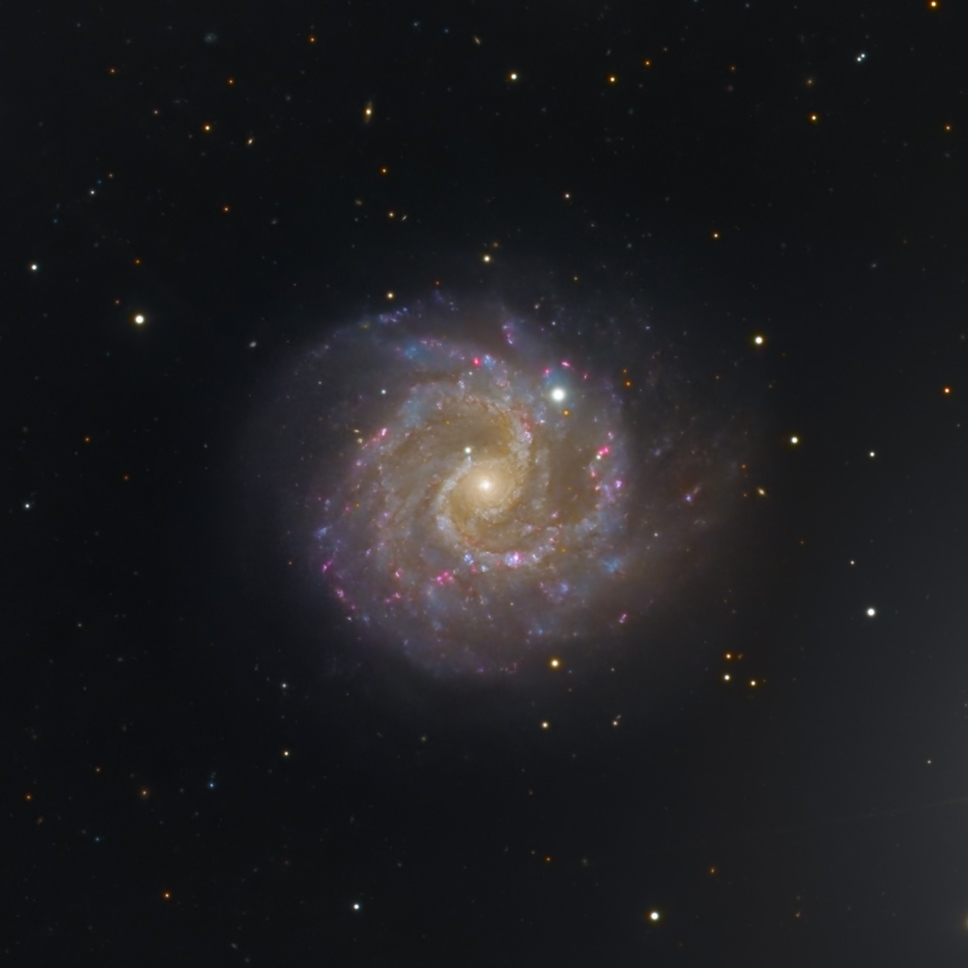
NGC3184 is an intermediate spiral galaxy, visually located within the constellation Ursa Major.
It is generally said to be about 40 million light years from us; at that distance, it would be about 100,000 light years across, which is somewhat less than the size of our Milky Way galaxy,
but large for galaxies; its distance from us makes it look small. Compare this to M33, which is little more than half the actual
size of NGC3184, but NGC3184 is about 15 times as far away from us as is M33. NGC3184 presents to almost directly face-on, giving it a dramatic appearance.
This galaxy is remarkable mostly for the frequency with which there have been observed supernovae, which is much greater than would be expected.
The gathering and processing of this data-set was complicated by the presence of two extremely bright stars near the galaxy; the bright yellow star to the right of the galaxy in the uncropped version (mag 6.5),
and one just off the frame at the upper left (one of the bright stars in the asterism the Big Dipper). As always, it's fun to scan the background of the uncropped image, and see all the tiny galaxies
hundreds of millions of light years away; the largest is NGC3179 (at the bottom of the uncropped image, close to the lower left corner), a magnitude 13.1 lenticular galaxy approximately 334 million
light years from us; at that distance, it is a very large galaxy--close to 200,000 light years across.
Copyright 2022 Mark de Regt